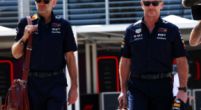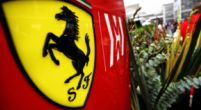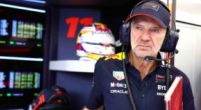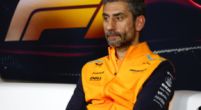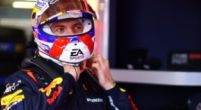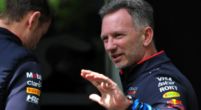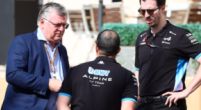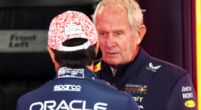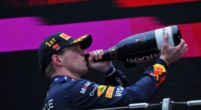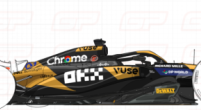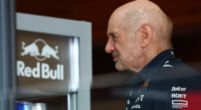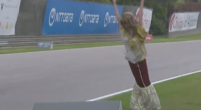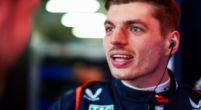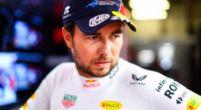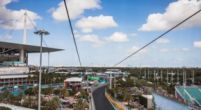Tech

Technical Analysis | Mercedes back in top form in 2024?
With almost 450 points behind Red Bull, Mercedes managed to finish second in the Constructors’ Championship in 2023, despite a season with a lot of ups and downs. After a terrible start of the season, the Brackley-based team decided to completely change the philosophy of their car, bringing 3 major upgrade packages to make the W14 a more competitive car. This aspect, together with a lot of strategy mistakes made during the season, relegated Mercedes to having to fight with Ferrari, Aston and McLaren, without being able to get a victory over the 22 races. Will they be back at their top form in 2024?
A lot of upgrades to change the W14
Since the very beginning of the season, the W14 suffered from two big problems: the instability of the rear of the car (especially on medium and low downforce circuits) and the high drag nature of their car. Mercedes, in fact, started the season with the W14, which was an evolution of the 2022 car and still adopted the “zero-pod” configuration. The cooling inlet was vertical and the sidepod had a more prolonged shape than the previous version, a signal that the engineers had understood that the key to making a car competitive was to drive the airflow up to the rear of the car. These design choices, however, made the rear of the car extremely nervous, not only in the low speed corners, but especially in medium speed corners. Additionally, the W14 had excessive drag and was extremely slow on straights compared to Red Bull and Ferrari (by around 10 kph).
For this reason, as already anticipated at the car launch, the team had kept open a development path that was based on the Red Bull and Aston Martin philosophy, in case the zero-sidepod philosophy would have still given poor results after the first races of the year.
And that’s exactly what happened: after disappointing results in the first five races of the year, Mercedes brought a completely new version of their car to Monte Carlo, where the main changes concerned all the sidepod and floor area and also the upper triangle of the front suspension. Regarding the sidepod area, the horizontal profile on which the rear-view mirror support was anchored had been maintained (because it contained the side impact spar, the SIS, which could not be moved, as it would have required a new frame), but a carbon fiber winglet had been added in the lower part next to the cooling inlet. This winglet had the main goal of weakening and diverting the turbulence coming from the front wheels outwards, so that they were not directed towards the rear of the car. Furthermore, as regards the cooling inlet, it no longer had a vertical shape as in the previous solution, but was characterized by a circular shape, in line with the philosophy undertaken by the other teams. It was placed right under the horizontal SIS fairing. Furthermore, as regards to the trend of the actual sidepod, it presented a shape useful to maximize the Coanda effect and direct the flows towards the beam wing and the rear diffuser.

The floor had been equipped with a small flow diverter placed just above the Venturi inlet, to push part of the flows towards the floor edge, which had also been revisited. In fact, it now had a long "knife" profile connected to the main floor by a series of metal supports. Moreover, in the front area it had a raised section which housed three metal vortex generators, useful for extracting those negative turbulences from underneath the car that are harmful to generate downforce.
Finally, for what concerns the upper triangle of the front suspension, it had a front arm now stuck in the upper part of the frame and is very inclined upwards, while the lower arm has been significantly lowered to create an "anti-dive" effect useful for better managing pitch under braking and yaw in fast corners.
All these new parts massively changed the behavior of the car, especially on high-downforce tracks and in fast corners, where the new floor helped generate more downforce. These upgrades also had a huge impact on tyre management during the race: the new suspension, together with the new floor made the W14 less sensitive to tyre wear, making it quicker over the stints. In fact, both Russell and Hamilton had a very good race in Barcelona, where they managed to finish P2 and P3. Moreover, Hamilton managed to get on the podium also in Montreal and Silverstone, and got pole position in Hungary, a proof that the changes to the front suspension made the car a bit more “pointy”, matching his driving style.
Despite the “B” version of their car, Mercedes were still struggling with those downsides the W14 had since the beginning of the season, including high drag and rear instability on medium downforce circuits and on traction. For this reason, the team decided to bring another update in Spa-Francorchamp to make the car quicker in straight lines and to minimize that instability effect. Once again, the main changes were related to the floor edge and all the sidepod area. As regards the cooling inlet, it had a less squared and more rounded shape, to increase the air flow intended for cooling the Power Unit. This new shape, characterized by the lower lip slightly inclined downwards, allows the creation of a channel, in the lower area, intended to feed the diffuser. Precisely for this reason, the lower side part of the sidepod was also "dug out", in order to "guide" the flow towards the rear as much as possible, to increase aerodynamic efficiency. In its upper part, the new sidepod showed a slight “waterslide”, useful for directing the air towards the beam wing and in line with the philosophy already adopted by Aston Martin and Mclaren. Furthermore, a minor but visible change has also affected the floor edge area which, at the raised edge, now has only 2 metal vortex generators, due to a different flow management following the change in philosophy of the front wing adopted in Silverstone.
Finally, the mirror no longer had the small carbon-fiber profile in its upper part, whose function was mainly aerodynamic.

All these changes allowed the W14 to produce much more downforce from the Venturi channels and the body of the car, thus run at a lower ride-height, with some benefits in aero-efficiency. Despite this big package, Hamilton and Russell still suffered a lot both in Spa and in Monza, but came back to podium positions both in Singapore and Qatar, where the drivers’ errors in the race were crucial, causing the team to lose a lot of points. Despite these good performances on maximum downforce tracks, the Brackley-based team still suffered in Suzuka, where the layout made of fast corners, two long straights and slow corners, forced them to adopt a medium downforce set-up, which caused evident rear-instability problems, not only during qualifying, but especially during the race, with Hamilton and Russell finishing almost 15 seconds behind the two McLarens.
The last update package was brought at COTA, not only to improve the W14 performance for the last races of the season and get P2 in the Constructors’ Championship, but especially to understand if the development path undertaken for the W15 was correct. The new solution was characterized by new Venturi inlets, a revised floor edge. In the drawing below, it’s possible to see all the changes highlighted by blue arrows. The Venturi inlet had a completely new shape compared to the previous version, with the distance between the floor edge wing (the biggest external element, which had been raised in height) and the two inside elements increased. This change was made to grow the amount of air pushed underneath the car and thus converted into downforce and to improve the car’s behavior especially in the high speed corners. Moreover, the floor edge had the same shape as the previous one, but the raised section had been inclined further and the two “vortex generators” at its exit changed too, with a more square space, to better manage the incoming turbulence from the front tyres, to push them away from the Venturi channels and to make the flow underneath as undisturbed as possible, with the goal to generate a very low pressure area.

All these changes had the main goal to both increase the downforce generated underneath the car and to increase W14 rear stability in slow speed corners; this floor also allowed the car to run at lower ride height. The effects were visible in the following races, as the team was very quick both in the US and Mexico, but Hamilton and Russell struggled a lot in the last three races of the season.
Back to winning way in 2024?
In order to be competitive again in 2024, Mercedes need to focus on two main aspects: improving the aerodynamic-efficiency, not only to make the car quicker in the straight lines, but especially not to be so far off Red Bull and Ferrari on low downforce tracks as it happened in 2023. The other key element they need to improve is the rear stability, which had been an Achilles heel during the whole season. For this reason, they must improve the interaction between the mechanics and aerodynamics of the car, to create a more stable platform, less sensitive to the layout of the circuits and the downforce configuration adopted. This aspect, in fact, had also been present on the 2022 car and is probably a negative aspect linked to the adoption of the "zero-sidepod" philosophy. However, being able to create a stable aerodynamic platform in all types of corners will allow the team to reduce the ride height and produce much more downforce from Venturi channels, while also improving the efficiency of the car.

